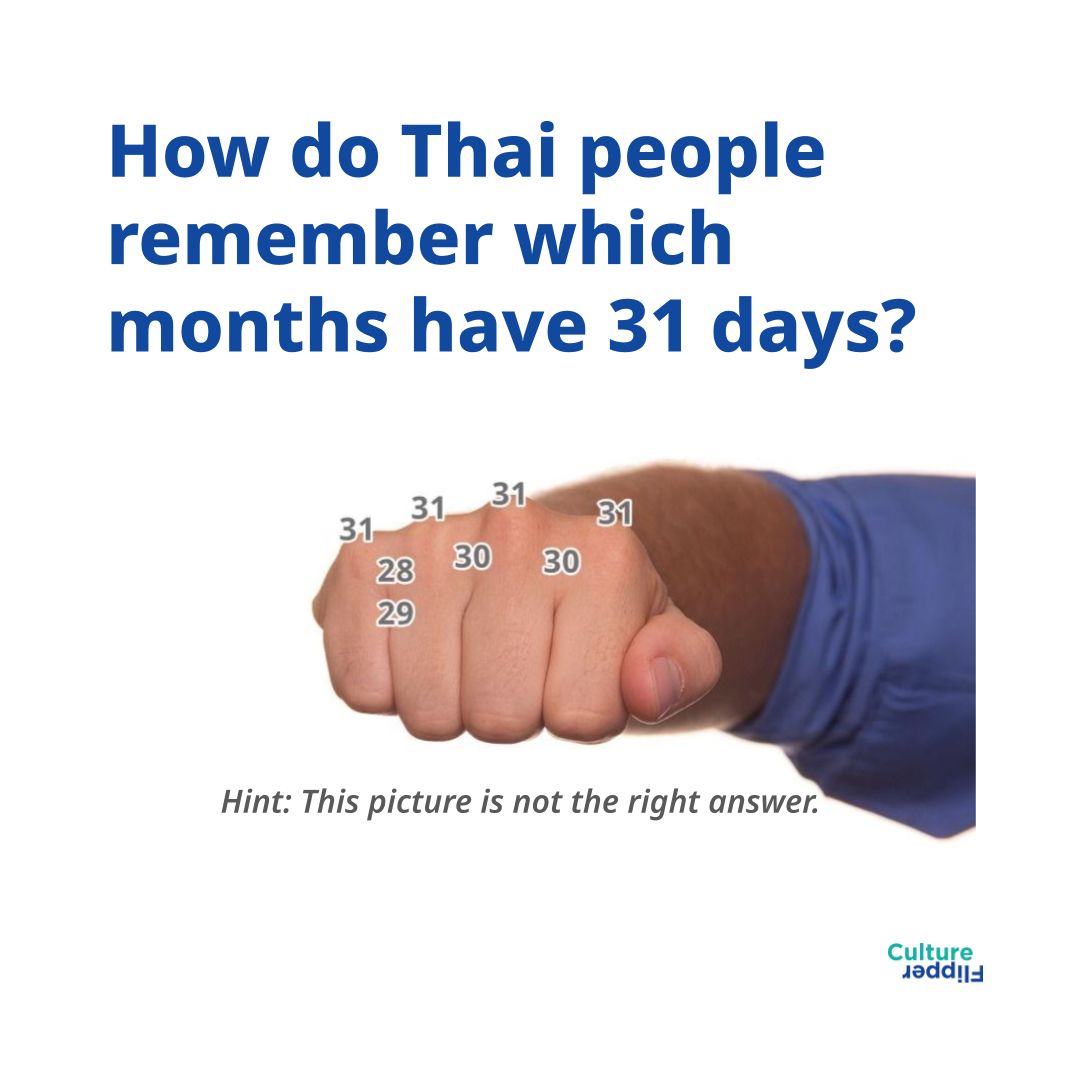Do you have a trick to remember which months have 31 days?

I recently stumbled upon this fascinating knuckle mnemonic that blew my mind. As I gazed at the picture and wondered why I never thought there would be a need for it, it hit me: as a Thai person, I possess a secret advantage in this realm of calendrical knowledge.
Allow me to enlighten you with our Thai wisdom. Except for February, every other month in the calendar can end with one of the following two syllables: “คม” (/kom/) or “ยน” (/yon/). Here’s the kicker: the months that end with “/kom/” have 31 days, while those ending with “/yon/” have 30.
Now, here’s where it gets interesting. The syllable “/kom/” happens to be a homophone for an adjective that means sharp. So picture this: Which number resembles a sharp, pointy object? You guessed it—number 1! So it becomes remarkably easy to recall the months that have 31 days. It’s like a hidden code embedded within the Thai language itself.
But wait, you may ask, what about poor ol’ February? This month is truly unique. It possesses neither 30 nor 31 days, standing alone in its brevity ending with “/pan/” instead.
Now, I must clarify that I use the term “syllable” instead of “word,” as the ending part of the month’s name is composed of more than one syllable and the actual root word carries its distinct meaning.
So, the next time you find yourself grappling with the mystical realm of the number of days in a month, take a moment to appreciate the brilliance of the Thai language. Embrace the power of “/kom/” and “/yon/,” and effortlessly navigate the labyrinth of the calendar.
Indonesian Translation: cultureflipper.com/blog/bagaimana-orang-thailand-mengingat-bulan-yang-jumlahnya-31-hari
